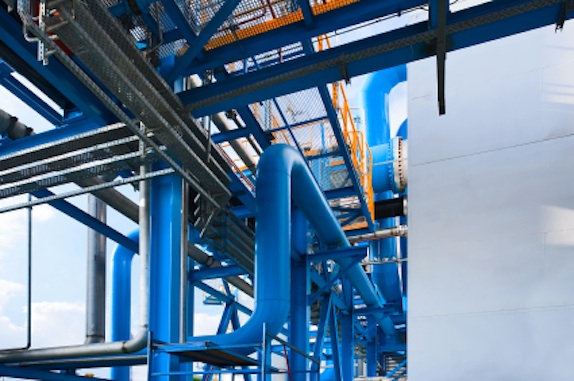Session Chair:
- Richard K. Grenville, Philadelphia Mixing
Session Description:
The issues associated with scale-up of mixing processes have been recognized for many years (for example, Bowen, Chemical Engineering, March 1985; Leng, Chemical Engineering Progress, June 1991). As processes are scaled-up, the timescales of mixing generally increase while the timescales of the process do not change. For example, if the concentration of reactants and the reactor temperature and pressure are constant on scale-up, the timescale of the reaction will also be constant. However, if a stirred tank is scaled using the common rule of geometric similarity and constant power per mass, a process at the 20m3 full scale will take almost 5 times longer to blend than a 20 liter pilot plant. For some processes this longer blend time may not matter, but for many processes this difference in blend time will be critical for success or failure.
Successful scale-up for mixing sensitive systems can be achieved by maintaining a constant ratio between the process rate and the rate of mixing – essentially constant Damkohler number. The key to this approach is identifying the rate limiting step, which may change on scale-up.
Speakers in this session will discuss their experiences developing and scaling-up mixing sensitive processes.
Schedule:
| TIME | PRESENTATION | SPEAKER |
| 2:30pm | A Further Look at the Bourne Protocol for Efficient Investigation of Mixing Sensitivities during Process Development |
Aaron Sarafinas, The Dow Chemical Company |
| 3:00pm |
Jason Giacomelli, Philadelphia Mixing Solutions |
|
| 3:30pm | Scale Up of Fluid Fine Tailings Flocculation Using Dynamic Mixing |
Clara Gomez, Coanda Reserach and Development |
Abstracts:
A Further Look at the Bourne Protocol for Efficient Investigation of Mixing Sensitivities during Process Development
Aaron Sarafinas, The Dow Chemical Company
Scale-Up (and Down) of Viscous Mixing Processes
Jason J. Giacomelli, Philadelphia Mixing Solutions Ltd.
Scale Up of Fluid Fine Tailings Flocculation Using Dynamic Mixing
Clara Gomez*1, Barry Bara2
1Coanda Research and Development Corporation, Burnaby, BC, Canada
2Syncrude CanadaLtd., Edmonton, AB, Canada
*corresponding author, E-mail: clara.gomez@coanda.ca
One of the most pressing environmental issues facing the Canadian Oil Sands Industry is the growing quantity of Fluid Fine Tailings (FFT) being stored in large open ponds. These tailings are a byproduct of the water-based extraction process used to recover bitumen from oil sands. While the process yields a high bitumen recovery, the mineral solids (coarse and fine particles), which comprise about 85wt% of the oil sands, are sent away as a slurry stream. The coarser solids separate easily from the slurry and can be used to construct containment structures, while the fines remain in suspension for extended periods of time. The resulting gel-like suspension can contain 30-40wt% mineral solids, with fines making up to over 90% of the suspended solids. Generally, clay minerals with high water retention capacity, constitute over half of the fines.
In order to enhance dewatering of FFT, high molecular weight medium charge density polyacrylamides are used to produce clay flocs that will settle. In this process, the polymer flocculant must be adequately mixed into the FFT to maximize contacting between the polymer strands and clay particles. The mixing of the polymer with the tailings is challenging since both the FFT and polymer are non-Newtonian fluids. Work to date has shown that the effectiveness of flocculation can vary significantly depending on the composition of the FFT, the quantity and concentration of the polymer, and the mixing and shearing process. As a result, dynamic mixing offers a significant advantage over static mixing strategies due to the ability to independently control the mixing energy input by adjusting the impeller speed. Adjustments in energy can be used to compensate for changes in flow rate and material properties (polymer and FFT) in order to prevent under-mixing or over-shearing, such that high quality flocculation can be maintained over a much wider operating window.
In this work, the flocculation of concentrated FFT was investigated over a wide range of conditions both at a laboratory and at a field pilot scale. The laboratory scale vessels produced good flocculated FFT under various combinations of FFT properties, polymer dosage, flow throughput (or residence time) and impeller RPM. Building on the successful combination of operating conditions under which good flocculation was achieved in the lab, a scaling approach was developed. Test work was then conducted at the field pilot scale and the results were compared to the laboratory data utilizing this scaling approach. Very good agreement was achieved between the two scales from this analysis, suggesting that the approach developed can be effectively used as design criteria. With this important conclusion, further development of dynamic mixing technology for tailings flocculation could be confidently carried out at smaller scales to reduce development time and costs.
Keywords: Non-Newtonian Mixing, Flocculation, Fluid Fine Tailings, Scale Up, Solid-Liquid separation.

